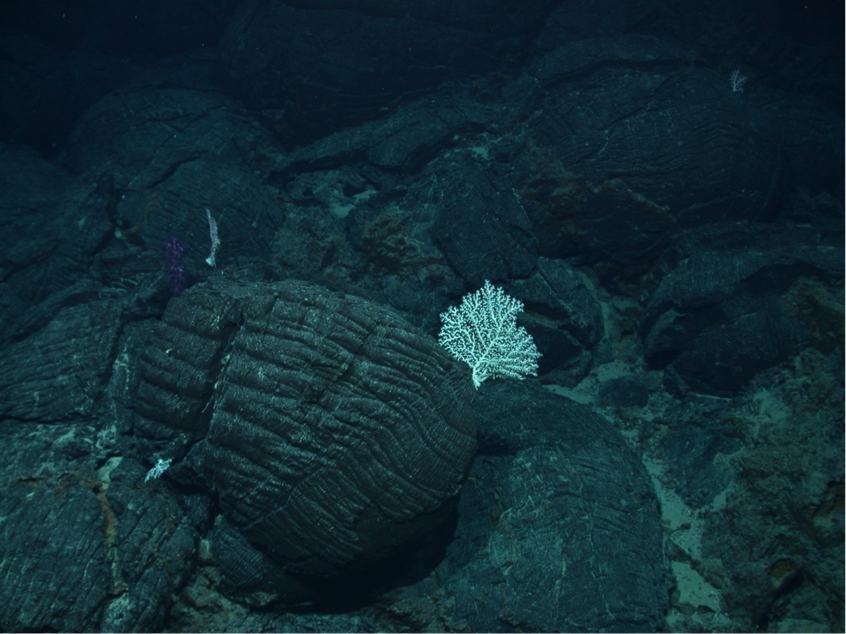Geology
How does the Earth produce oceanic crust at MORs?
Oceanic crust is constantly formed at mid-ocean ridges, where tectonic plates are tearing apart from each other, the so-called divergent plat boundaries. As magma that wells up from these rifts in Earth’s surface cools, it becomes young oceanic crust. The age, density and overburden sediment cover of oceanic crust increases with distance from mid-ocean ridges. Oceanic crust is primarily composed of mafic rocks, which are rich in iron and magnesium, with pillow basalts forming the topmost layer of a few hundred meters thickness.
How does basalt evolve over time (from ridge axis via flank to deeper ocean)?
As the mantle rises along the mid-ocean spreading axes, it cools and melts as the pressure decreases. The amount of melt produced depends only on the temperature of the mantle as it rises so that most oceanic crust shows the same thickness (6-8 km). Very slow spreading ridges (<1 cm·yr−1 half-rate) produce thinner crust (4–5 km thick) as the mantle has a chance to cool on upwelling and so it crosses the solidus and melts at lesser depth, thereby producing less melt and thinner crust (e.g. Gakkel Ridge, Arctic Ocean). Thicker than average crust is found above plumes as the mantle is hotter and hence it crosses the solidus and melts at a greater depth, creating more melt and a thicker crust (e.g. Iceland ~20 km thick crust).
The cooling of the magma when reaching the seafloor is highly efficient, and basalts are the most productive aquifers of all volcanic rock types. Given the huge area of seafloor on Earth, the upper (0,5km) ocean crust represents by far the largest aquifer system. The permeability of basaltic rocks is highly variable and depends largely on the following factors: the cooling rate and the thickness of the basaltic lava flow.
At the young ridge flanks, cooling is effective as the insulating sediment cover is absent, or very thin. Fluid flow in the altered, upper ocean crust may hance be directed away from the ridge axis at moderate rates. Such fluid movement may aid dispersion of CO2-enriched fluids to enhance carbonation reactions.

What is so special about basaltswrt CCS?
Basaltic rocks are highly reactive and contain the metals needed for permanently immobilizing CO2 through the formation of carbonate minerals. They are often fractured and porous, containing storage space for the mineralized CO2. Furthermore, basalt is the most common rock type on the surface of Earth, covering ~5% of the continents and most of the oceanic floor.
It has been estimated that the active rift zone in Iceland could store over 400 Gt CO2 (400 billion tons of CO2). The theoretical storage capacity of the ocean ridges is significantly larger than the estimated 18,500 Gt CO2 stemming from the burning of all fossil fuel carbon on Earth. The question remains, how much of this theoretical storage capacity is feasible to use for mineral storage of CO2.
The pore space, chemical composition, and wide distribution of basalts makes it the perfect candidate to develop the Carbfix process. However, other reactive rocks such as andesites, peridotites, breccias and sedimentary formations containing calcium, magnesium and iron rich silicate minerals can also do the job. Studies on that subject are undertaken in Carbfix2 and the related GECO project.

